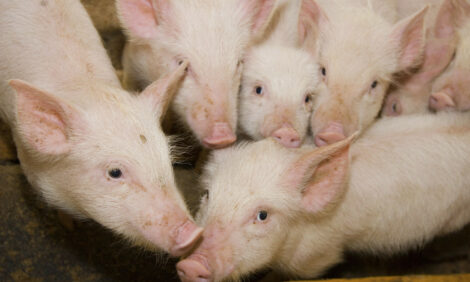



Market Preview: Revisiting December Pig Crop Report
US - Weekly US Market Preview provided by Steve R. Meyer, Ph.D., Paragon Economics, Inc.At what point do we punt the December Hogs and Pigs Report? That is the question that is weighing on the minds of both market analysts and producers as hog slaughter numbers remain far below expected levels and weights show no signs of “backed up“ hogs. I realise there are performance issues, so let’s discuss the report, what it suggested for this spring, and the forces that could be driving numbers in various directions.
First, let’s address the December report. You might recall, it was a bit bearish in that virtually every inventory category except “kept for breeding“ was slightly larger than was expected by industry analysts. Analysts certainly are not always correct in their pre-report estimates, but they do give us an idea of what the market is trading going into the release of a key report. And, “actual vs. expectation“ is a key issue in short term moves in the futures market.
The red line in Figure 1 represents my calculations for weekly hog slaughter simply using 2009 slaughter, year-on-year changes suggested by the December report, plus some adjustments for April onward. The adjustments account for the lower number of Canadian feeder pigs, which have come to the States since 1 December and those yet to come through August of this year. My forecast for first quarter federally-inspected (FI) slaughter is 28.14 million head, 1.8 per cent lower than one year earlier.

But actual 2010 slaughter (the green line) has fallen well below expected levels. In fact, actual slaughter, year-to-date, is down 5.2 per cent from last year and 3.5 per cent from my forecast levels. Last week’s total was farther below the levels of both last year and my forecasts than was the week before.
Obviously, weather has been a huge factor. I do not recall ever seeing a year in which weekly slaughter totals have been more disrupted than this year. And the snow and ice storm last Monday (25 January) was a doozy across much of Iowa, preventing deliveries to a number of plants and causing last week’s dip.
But hogs left in finishing barns for a few more days just keep getting larger and larger, right? Not necessarily. The same weather that has hampered hog deliveries has wreaked havoc on feed deliveries, too. “Out-of-feed events“ have been commonplace this winter. Combine that with some struggles with molds, mycotoxins and reduced energy content in the 2009 corn crop and it’s not so surprising that getting hogs up to market weight has been a challenge. But note that USDA has kept revising the average market weights upward (see North American Pork Industry Data table). USDA has added 2 lb. to each of the first two weeks of this year since the estimates were first published.
Back to our original question: Is all of this enough to discount the December report? My answer at this point would be “Not completely – provided numbers get to or above expected levels, if we ever get a week with reasonable weather.“ A deviation of 3.5 per cent is big, but not unheard of, and there are still eight weeks remaining in this quarter. Shortfalls in two or three more weeks would drive me to conclude that USDA over-counted pigs – especially if the weather allows normal winter-time deliveries going forward.
That, of course, would imply that supplies may be lower than expected in 2010, in which case I would increase my price forecasts. I’m not ready to do that yet, especially with the selloff in Lean Hog futures over the past two weeks. Still, an upward revision is possible, especially if these pigs don’t show up soon.
Impact of Plant Closure
Figure 1 also shows US slaughter capacity in lieu of Morrell’s decision to close the Sioux City, IA, plant. That plant had a capacity of 14,000/day or roughly 70,000/week. It had been operating at only about 10,000-11,000/day recently, but capacity levels were pushed in 2008, when Smithfield Foods had some large orders for half- and quarter-carcasses from China.
Capacity could get a bit tight this fall but not enough so, in my opinion, to cause any severe price difficulties. Further, I do not see the closure having much of an impact on prices even in the western Cornbelt. The plant will not close until 20 April, when hog supplies should be 2.1 million/week. In addition, there are eight large plants and four smaller plants within a 150-mile radius of Sioux City, so producers will still have ample marketing options.
This plant closure is another sad impact of high-priced corn and mandatory country-of-origin labeling, both of which have caused lower hog supplies (at least relative to what would have been the case) in the United States. While no one knew the Sioux City plant would close, the fact that one US plant would close was quite foreseeable. I had hoped the December inventory had granted a reprieve for 2010. But hog numbers that are, so far, short of those inventory levels and economic realities at Sioux City dictated otherwise.










